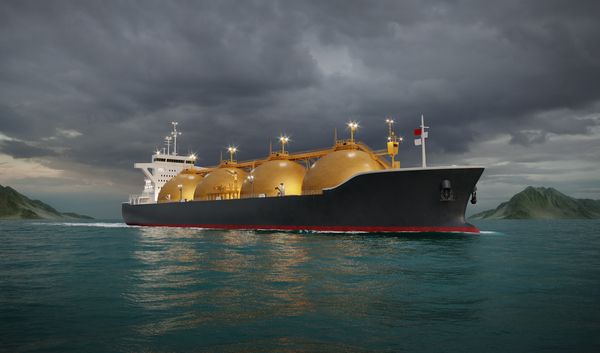Cheniere Energy (LNG +1.08%) is the only company in the U.S. that has FERC approval to export liquefied natural gas, and one of only two companies with Department of Energy approval to send it to countries with, or without, a free-trade agreement with the U.S. This is a coveted position; Cheniere is not only a first mover, right now it is the only mover.
This status makes Cheniere Energy an intriguing play for investors. If you haven't been following the company forever, you may have some questions. That's why I created a premium report on the company, to help guide investors on whether or not Cheniere merits consideration for their portfolios.
Following is an excerpt from the report, laying out the company's opportunity. We hope you enjoy it.
The opportunity
Cheniere Energy is currently on the third iteration of its business plan. Initially conceived as an exploration and production company, Cheniere eventually decided the real money was in the importing and degasification of liquid natural gas, or LNG. The takeoff of domestic natural gas production illuminated that it was, in fact, not where the money was, so Cheniere's management opted to try its hand at natural gas export instead. The current disparity between the price of natural gas in the U.S. and the price of gas in Europe and Asia makes this a very compelling idea right now, and Cheniere's third act is a quest to exploit those margins. Fortunately, the company's assets are located right where export assets need to be, and if everything goes according to plan, Cheniere could be exporting gas to the world as early as the end of 2015.The assets
The company's Sabine Pass liquefaction facility is technically owned by master limited partnership Cheniere Energy Partners. Cheniere has a 61% stake in this MLP, which also owns the very much underused Sabine Pass import facility.Located on Louisiana's Gulf Coast, the liquefaction project at Sabine Pass is designed to ultimately export about 27 million tons per year of liquefied natural gas. Close proximity to a number of shale plays in Texas and the Haynesville Shale in Louisiana, means that Sabine Pass is perfectly situated for exports.
Getting an export facility up and running is not cheap, however; Cheniere had to find $5.7 billion to finance the development of the first two LNG trains at Sabine Pass. The first and second trains are under construction, with train one scheduled to come online toward the end of 2015, and train two coming online six to nine months after that. Trains three and four have received all necessary federal approvals and Cheniere has entered into a lump sum turnkey EPC contract with Bechtel, and is working to secure financing and make a final investment decision. If everything goes as planned, construction will begin in 2013 .
Cheniere has a second liquefaction project in the nascent stages of development in Corpus Christi, Texas. It is an ideal location because of its proximity to all the exploration and production action going on in the Eagle Ford Shale right now. The plan for this facility includes three LNG trains capable of exporting a combined 15 million tons per year, an amount that the Department of Energy officially approved in October. Cheniere filed the necessary applications with FERC for construction and operation authorization in August 2012. If and when FERC approves, Cheniere can move forward to secure financing, customers, and contract for the construction of the first train at Corpus Christi.
The Creole Trail pipeline is the Cheniere asset that gets the least amount of attention, but it is important to the company's business model. A mere 94 miles long, the pipeline connects to no fewer than seven other natural gas transportation networks. In February 2013, Cheniere received permission from FERC to reverse the flow of the line, so that it may deliver gas to Sabine Pass for liquefaction, in lieu of transporting imported gas from the facility. The pipeline is currently in its open season period, soliciting bids from shippers. If everything goes according to plan, the reversed Creole Trail will go into service in the fourth quarter of 2014, reaching full capacity of 1.5 billion cubic feet per day by the fourth quarter of 2015. At some point between now and then, Cheniere Energy Partners will purchase the pipeline from Cheniere for $300 million and 12 million Class B units .
With all its ducks in a row, Cheniere should be ready to take advantage of a rise in global demand for natural gas. All told, some expect global demand for natural gas to rise 19% higher than 2010 levels by 2017.
Looking for more guidance?
That was just a sample of our new premium report on Cheniere Energy. If you're weighing whether the company is a buy or sell, the report is an essential resource for investors seeking more information on the company. Not only that, but the report comes with updated quarterly guidance and dives into upcoming catalysts on the horizon. To get started, simply click here now.






